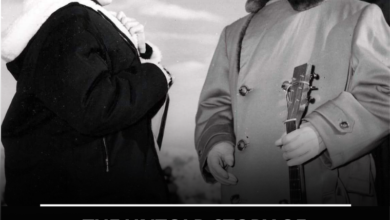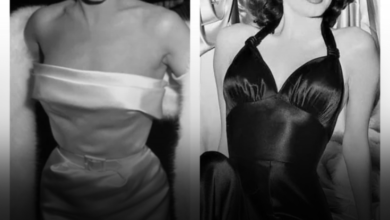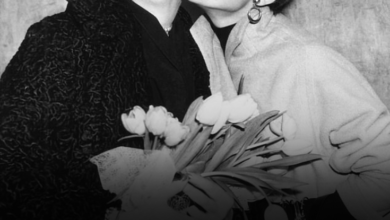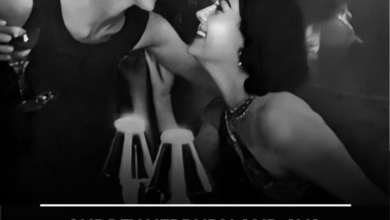Audrey Hepburn’s Harrowing War-Time Childhood: The Heartbreak and Hunger That Fueled Her Compassion!
OPINION: This article may contain commentary which reflects the author's opinion.
Audrey Hepburn’s image—graceful, poised, and eternally glamorous—has endured as one of Hollywood’s most cherished legacies. But behind the iconic roles and Givenchy couture lies a childhood filled with hardship that not only defined her character but also fueled her later humanitarian work.
A Childhood Marked by Loss and War
Born on May 4, 1929, in Ixelles, a municipality of Brussels, Audrey Kathleen Hepburn-Ruston came into the world under circumstances that initially seemed privileged. Her mother, Baroness Ella van Heemstra, was a Dutch aristocrat, and her father, Victor John Hepburn-Ruston, was a British banker. But appearances were deceptive. Her father’s fascination with fascist ideology and the British Union of Fascists cast a shadow over their family life. By the time Audrey was six years old, her parents divorced, leaving her emotionally scarred and dealing with abandonment at a tender age. “Her childhood was beautiful until her father abandoned her and broke her heart,” her son Sean Hepburn Ferrer later remarked.
Her early schooling in England offered a brief period of stability, but with the outbreak of World War II, the safety net vanished. Her mother moved the family to the Netherlands, believing it would be spared the devastation. That belief was shattered in May 1940 when German forces invaded, plunging the country into a brutal occupation. Audrey’s dream of becoming a classical ballerina was soon extinguished by the grim realities of war—starvation, cold, and constant danger.
Malnutrition and Survival
The Dutch Hunger Winter of 1944-45 became a defining period for Audrey. The Nazis cut off food supplies, leading to widespread famine. Audrey, like so many others, subsisted on meager rations, including tulip bulbs and nettles, just to stay alive. Malnutrition stunted her growth, weakened her bones, and left her emaciated. Her son Sean has said she once resorted to eating dog biscuits to stave off hunger. The toll on her health was significant: anemia, respiratory issues, and a fragile frame that made her lifelong dream of becoming a professional ballerina unattainable.
The war stripped away her privileged early years, leaving her with a profound understanding of deprivation. Yet, this harrowing experience also shaped her resilience, empathy, and determination to rise above her circumstances.
From Wartime Struggles to Stardom
In the postwar years, Audrey’s life took a dramatic turn. She moved to England to study ballet under renowned choreographer Marie Rambert. Though she had talent, the physical damage wrought by years of malnutrition ultimately dashed her hopes for a ballet career. Instead, Audrey turned to acting, a decision that would lead her to Hollywood and international fame.
Her big break came when French novelist Colette selected her to play the title role in the Broadway adaptation of Gigi. In 1951, she made her stage debut to critical acclaim. Just two years later, she captured hearts in Roman Holiday opposite Gregory Peck, earning her an Academy Award for Best Actress.
A Humanitarian at Heart
Despite her ascent to stardom, Audrey never forgot the hardships of her youth. Her experience of hunger and war inspired her to dedicate much of her later life to humanitarian causes. In 1988, she was appointed a Goodwill Ambassador for UNICEF, the very organization that had provided emergency food and medical aid to her and countless other children at the end of World War II.
Audrey’s humanitarian work was both tireless and heartfelt. She traveled to Ethiopia, Somalia, Vietnam, and other nations suffering from famine and conflict. Her focus was not on promoting herself, but on raising awareness about children’s suffering and urging global action. “I know perfectly well what UNICEF can mean for children because I was one of those who received emergency food and medical aid at the end of World War II,” she told reporters. Until her death from colon cancer in 1993, Audrey remained a staunch advocate for the world’s most vulnerable.
A Life Transformed
Audrey Hepburn’s journey from a war-stricken childhood to global stardom and humanitarian icon is a testament to her resilience and compassion. Her life story, now immortalized in films, documentaries, and even graphic novels, continues to inspire. As the new graphic novel Audrey’s War illustrates, the hardships she endured during World War II were not just formative—they were transformative, shaping the woman who became a beacon of grace, strength, and kindness for generations.



